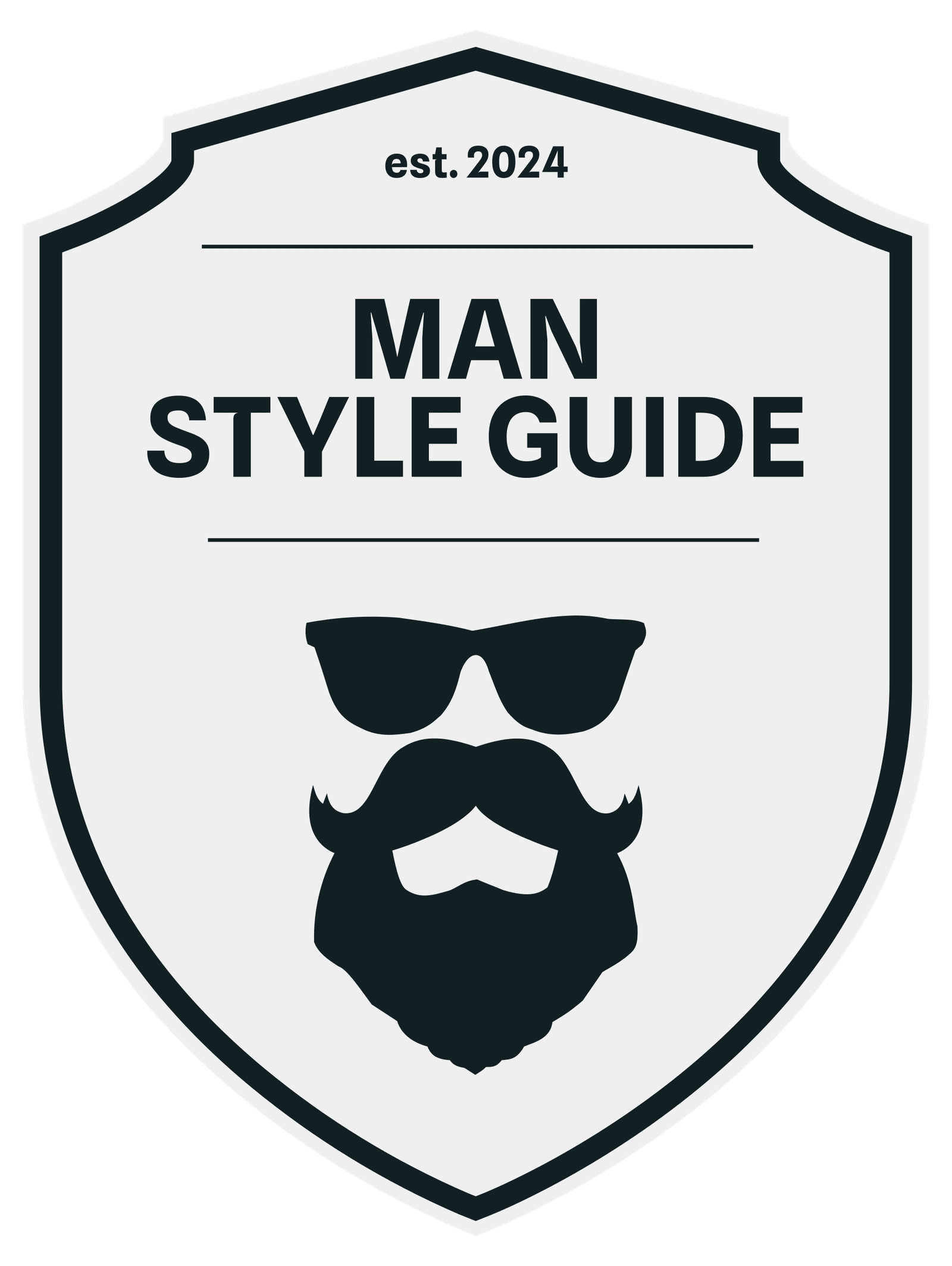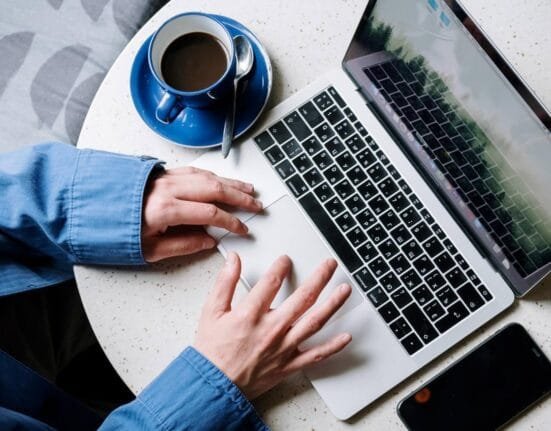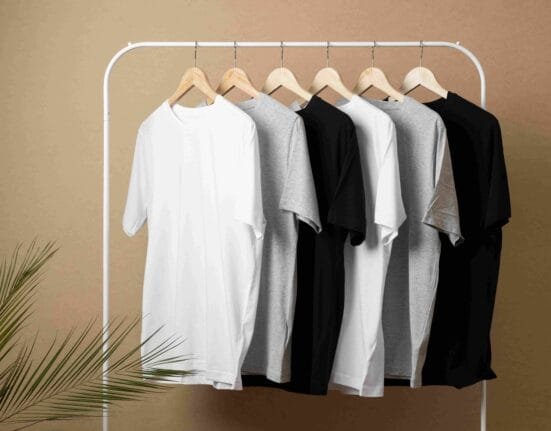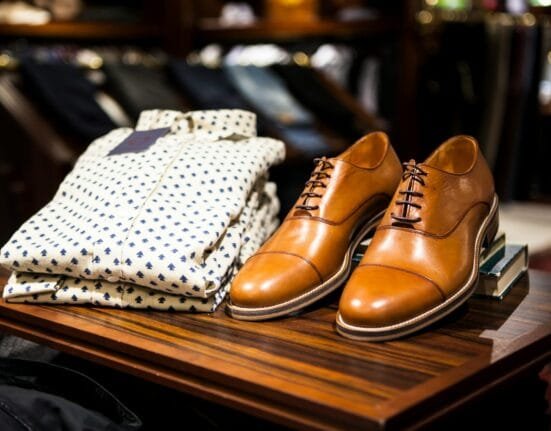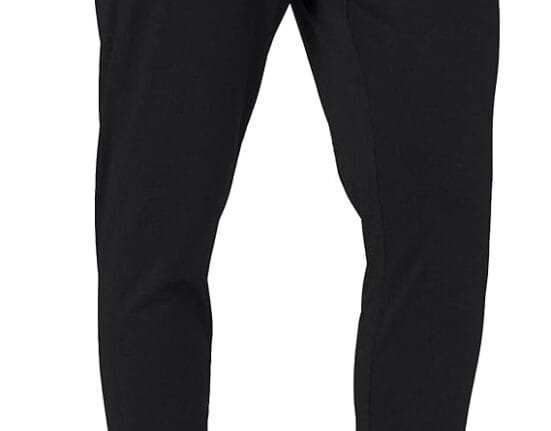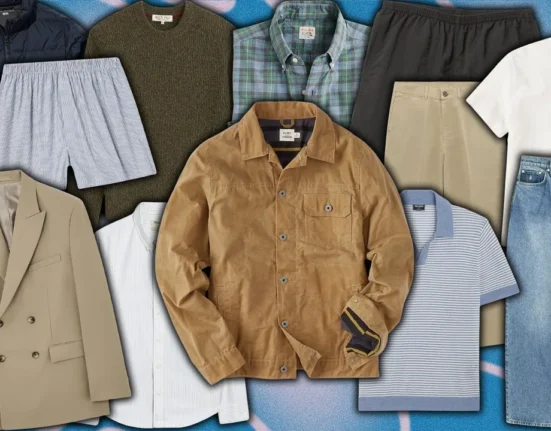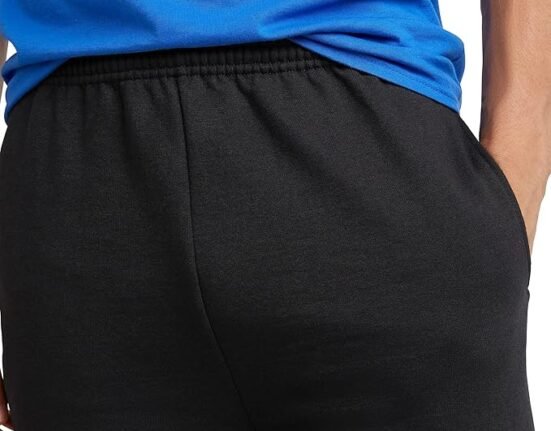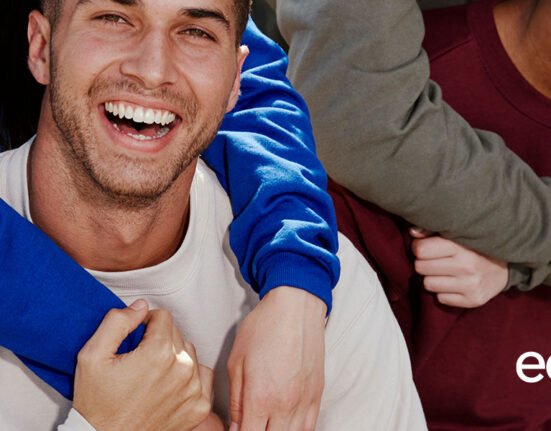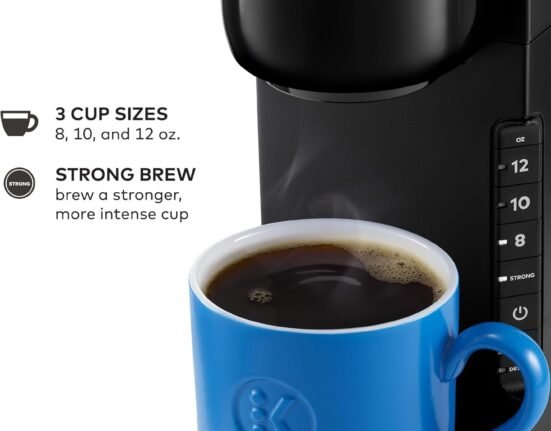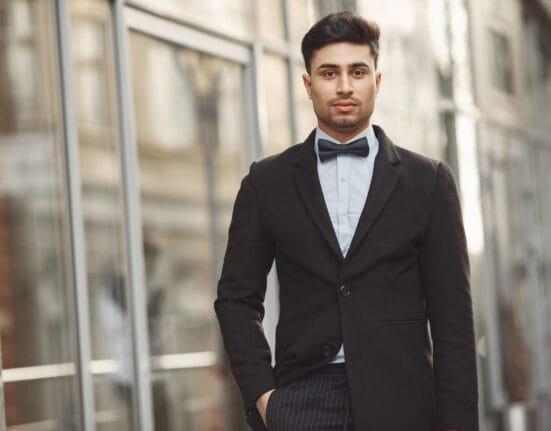Business Casual Clothing for Men: 10 Style Rules to Stand Out
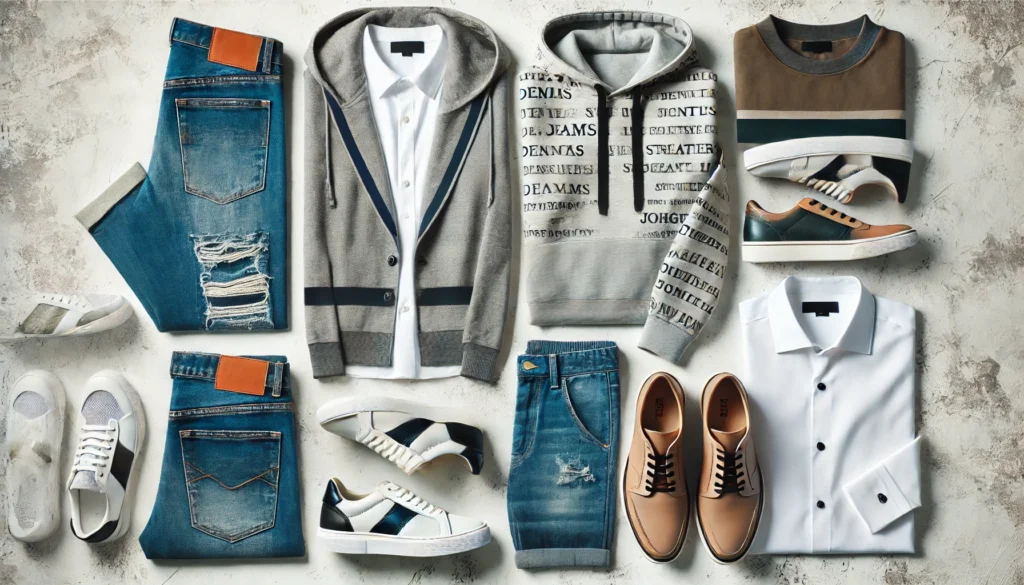
In the modern workplace, that often means nailing down the business casual vibe. It is the attunement of professional look with comfy feel. So what does men business casual even mean, and how can you be sure to get it right? Here is a full rundown of the key guidelines for crushing this look so you can strut into any rooms looking sharp and self-assured.
Table of Contents
Understand The Fundamentals Of Men Business Casual
But before we get into specific items, it is essential to understand what business casual even is. The term has changed over the years, and while it typically means less formal than a suit but more classy than jeans and a t-shirt, how you express this appropriate dress depends on the company. Business casual for men generally consists of the following:
- Tailored trousers or chinos
- Dress Shirts (button-downs or polo shirts)
- Blazers or sport coat (optional but encouraged!)
- Smart casual shoes like loafers, oxfords etc.
Business casual means you can show a bit of personality while still maintaining professionalism. Dress Codes You Need to Follow Making sure you are well versed in your companies dress code is a must in order for you not to go off on the deep end.
__ If you’re curious about how business casual compares to other dress codes, our Men’s Style Handbook: Dress Codes Decoded provides a complete overview of dress expectations for different settings. __
Curate Your Business Casual Closet
The key to an effective business casual wardrobe begins with the basics that can mix and match. And building a capsule wardrobe means investing in few essentials so you can have range and convenience when putting your outfits together. Here are the essentials you need to have on hand:
Well-fitted navy or gray blazers are a key piece to business casual. It instantly makes you look much better.
Formal Shirts: Opt for white, linen color & light Blue – and check or Stripe patterns.
Chinos or Dress Trousers: When it comes to fit, stick with something minimal and choose neutral tones such as khaki, gray and navy for the most adaptability.
Shoes (make sure whether it is loafers or oxfords) A pair of leather loafers or brogues that go well with your outfit.
These staples will provide you the foundation to make multiple outfits without stacking your wardrobe up plenty.
Choose the Best Color and Fabric
Business casual all goes down to the right choice of colors and fabrics. If you’re a newbie, stick to neutral colors. Timeless and adaptable, we turn to navy, gray, beige, white.
- As for the fabric, comfort and durability — quality.
- Cotton: Brilliant for shirts, and trousers more so; its breathable and comfy.
- Wool: Great for blazers and the winter season; it has a more elegant vibe.
Linen one of only fabrics that’s best used in warmer climates but behaves as wrinkly as a dog. When you need to wear business casual that is not as formal linen can work.
By carefully pairing these colors and fabrics you will make sure your appearance is appropriate every season.
Step 1: Get The Right Shoes For Business Casual
- SHOES — These can either make or break the business casual look! Have really good shoes — they will boost your style but also improve comfort levels, especially if you are standing for a long time. Here are a few go-to options:
- Loafers — popular, and easy to wear with chinos or dress slacks.
- Oxfords or Derbies—these are the better option if you would like to add a little bit more formality into your business casual attire.
- Smart leather sneakers : If your office is on the more casual side, leather sneakers in neutral tones will do later, but be sure to check your company policy.
Shoes which are polished and scuff-free add to a well-groomed appearance; keeping them in their best condition pays off.
The art of accessorizing without going overboard
Accessories are a perfect opportunity to inject some personality but remember this is business casual-light so less is more. A few smart choices include:
- Watch: There is nothing like a classic wristwatch to complete the look.
- Belt: Wear a leather belt that matches the color of your shoes.
- Passatory Jewelry: Nothing too loud, perhaps minimalist cufflinks or a simple bracelet.
Try to accessorize in a manner that compliments your attire but does not draw focus. In business casual, less is more remember that.
Master Your Layers with Blazers and Sweaters
Layering The simplest way to add dimension and style to your look is by layering. Consider adding these pieces:
- Blazers: It is one item which should be matched appropriately to give a formal look.
- Cardigans and Sweaters: These are perfect for layering over a collared shirt to help keep you warm without sacrificing style under a blazer.
Opt for layers in neutral colors so you can mix and match. It can also work to take you from a daytime look to be appropriate for your evening wardrobe too!
__ For those more relaxed days, adding a hoodie can be a stylish alternative. Check out our Men’s Hoodie Handbook: Types of Hoodies to find the best options for casual layering. __
Common Business Casual Mistakes to Avoid
Business casual blunders happen even to the best-dressed man. Let’s take a look at some common mistakes to steer clear of:
- Clothes with Poor Fit: Be sure that your clothes are well-fitting. Baggy or too tight and that looks amateurish, as well.
- Wrong Type of Footwear: Avoid sneakers except for leather ones, where permitted at your job. Do not even think about flip-flops and sandals.
And my tip-how to compliment the business casual look: avoid over-accessorizing. Stay Away from Flashy Accessories that Over-Power Your Outfit
Avoiding these faux pas are the most professional thing you could do to be polished and prepared for any environment.
A Versatile Business Casual Outfit Done by Mixing and Matching
Building a business casual wardrobe does rely on some piece of versatility. One pair of tailored trousers can be paired with several different shirts and blazers for a variety of looks without the need to wear more clothes.
- Sample Combos: A white dress shirt and navy blazer, gray chinos one day, paired with a patterned shirt and the same blazer & trousers the next.
- Layer with Textures: Wearing a cotton shirt under a wool blazer provides contrast and dimension.
You can maintain a fresh wardrobe by whatever $300-$600 worth of clothes you have.
How to Modify Business Casual Style to the Seasons
Your weather will absolutely influence what type of business casual garments you select. Here are ways you can maintain your style and comfort throughout the seasons:
Spring/Summer: Breathable fabrics including cotton and linen – go for lighter colors as the pastels do well. Lightweight cotton and linen fabrics keep you cool, while lighter colors like pastels work well.
Fall/Winter: Seasonal wardrobe adjustments will keep you from being too warm or cold while still conforming to the standards of business casual.
__ For situations where a slightly more formal look is needed, consider exploring Redefining Style with Semi-Formal Attire for Men to see how semi-formal wear can make an impact. __
Dress with purpose and character: Confidence is everything
And finally — the rule that trumps all the others: rock your business casual in confidence. Dress up how you are and in a professional manner. Stay within the limits but experiment with what feels best for you, such as a patterned shirt or blazer of unique color.
Confidence is the finishing touch to any outfit, so wear whatever style suits you best and wear it with pride!
Final Thoughts
While business casual for men may not seem easy, in fact it is quite simple to master. With it, you can invest in quality items focused on a few essentials and true to your style — while building a wardrobe that is polished, functional, and versatile. Keep these 10 rules in mind, and you will be well on your way to feel confidently different from the rest of the crowd in any business casual environment. Ready to elevate your style? Choose one or two essentials today and check the result!
Business casual clothing for men refers to attire that is less formal than a suit but more polished than everyday casual wear. Typically, it includes items like tailored trousers or chinos, collared shirts (such as button-downs or polo shirts), blazers, and smart-casual shoes like loafers or oxfords. Business casual allows men to express personal style while maintaining a professional look.
You can buy business casual clothes for men at a variety of stores, including department stores and specialized men’s clothing retailers. For high-quality business casual attire, check stores like Nordstrom, Macy’s, and online options such as Amazon or Bonobos. It’s best to look for retailers known for professional attire to ensure good quality and fit.
If you’re wondering where to shop for men’s business casual clothes, stores like Banana Republic, J.Crew, and Zara offer a wide range of business casual options. These stores typically carry everything from trousers and blazers to dress shirts, making it easy to put together a polished business casual wardrobe.
Business casual clothes for men refer to items that are less formal than traditional business suits but more refined than casual wear. They usually include collared shirts, tailored trousers, smart shoes, and sometimes blazers or sweaters. This style is intended to offer a professional look without requiring a full suit.
Business casual clothing for men is a versatile dress code that blends elements of professional and casual attire. It allows men to dress comfortably while still looking polished, typically consisting of dress shirts, chinos or trousers, and appropriate shoes like loafers. Business casual helps men maintain a professional appearance without the formality of a suit and tie.
